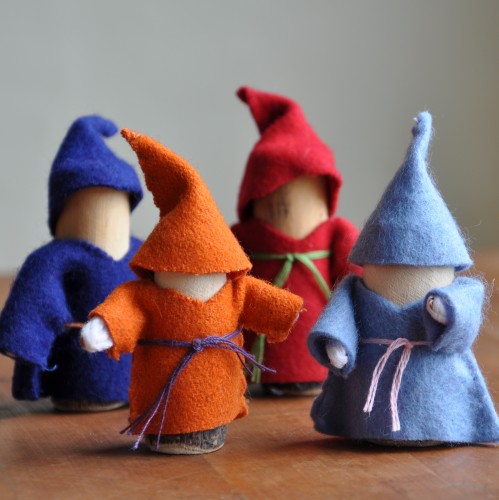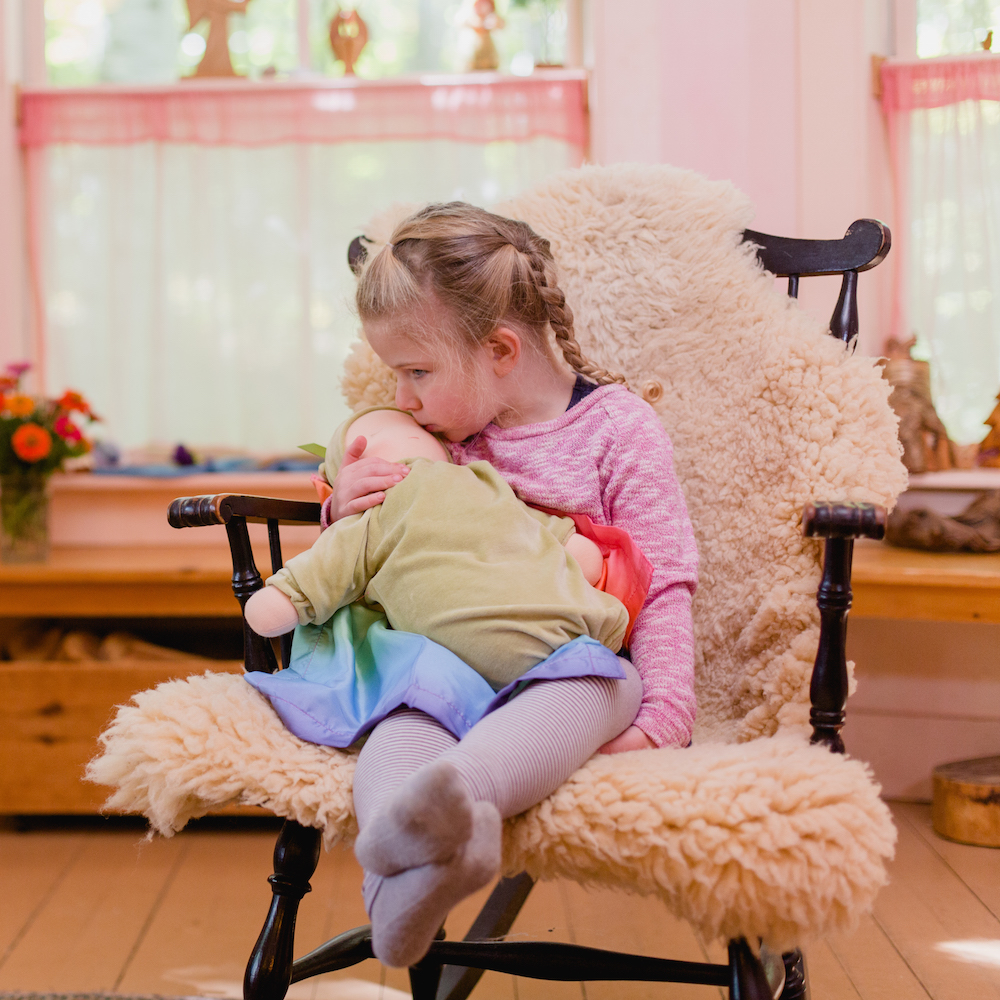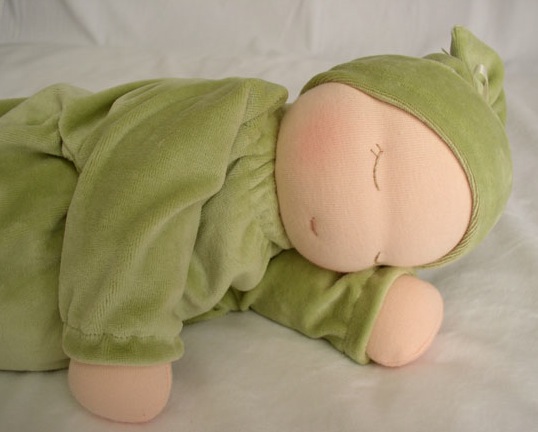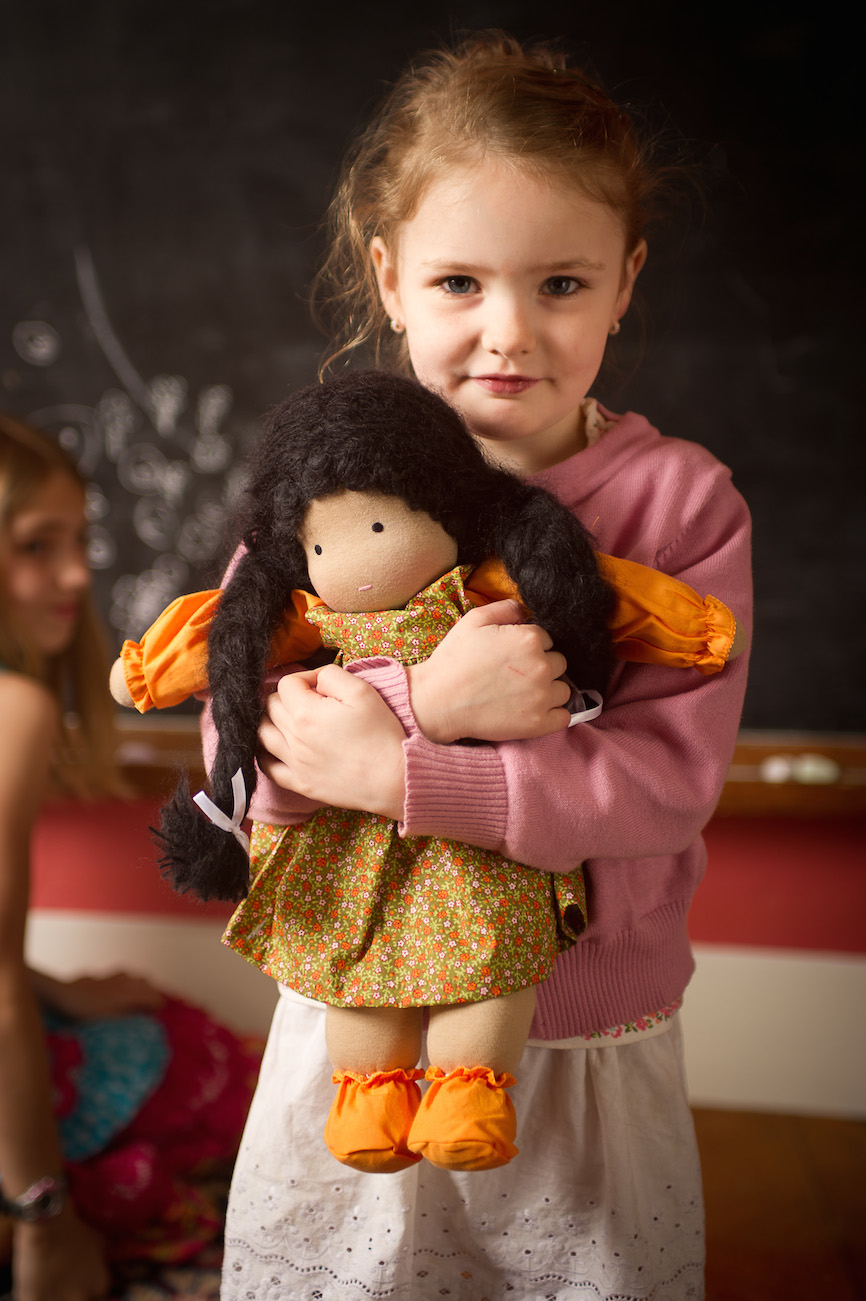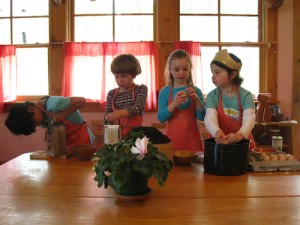A Waldorf doll may be the first thing that comes to mind when one thinks of “Waldorf toys.” I often receive inquiries about Waldorf dolls and how to choose one. Here, I share with you some of the common questions, and my responses.
Q: What exactly is a Waldorf doll?
A: A Waldorf doll is a type of doll used in Waldorf education. They are usually handmade of natural fibers, like wool and cotton, using traditional European dollmaking techniques.
The facial features of a Waldorf doll are intentionally minimal (for example, two embroidered eyes, and a hint of a mouth) or they may have no facial features at all! This is to allow a child to develop his or her capacity for imagination and creativity. Without fixed facial features, a child can imagine the doll to have any expression. It is equally easy to imagine such a doll being happy or sad; crying or laughing—unlike a hard plastic doll, with a fixed, permanent expression.
Q: When is a good time to introduce a doll for the first time? Which dolls would you recommend for different ages?
A: One can introduce a doll to a baby during the first year! I always recommend a Waldorf Blanket Doll as the perfect first doll for a baby, and up to the age of two.
Sometimes known as a “Towel Doll,” a Blanket Doll is a cross between a favorite “blankie” and a doll. Babies love to look at the human face, and this doll has a formed head covered with cotton knit skin and hand-sewn simple facial features. It has an unformed, soft flannel body, and simple hands and feet sewn into the four corners. The cotton flannel body is warm and soft, and nourishing to a baby’s developing senses. The hands and feet invite gumming and chewing, and the materials are safe and non-toxic.
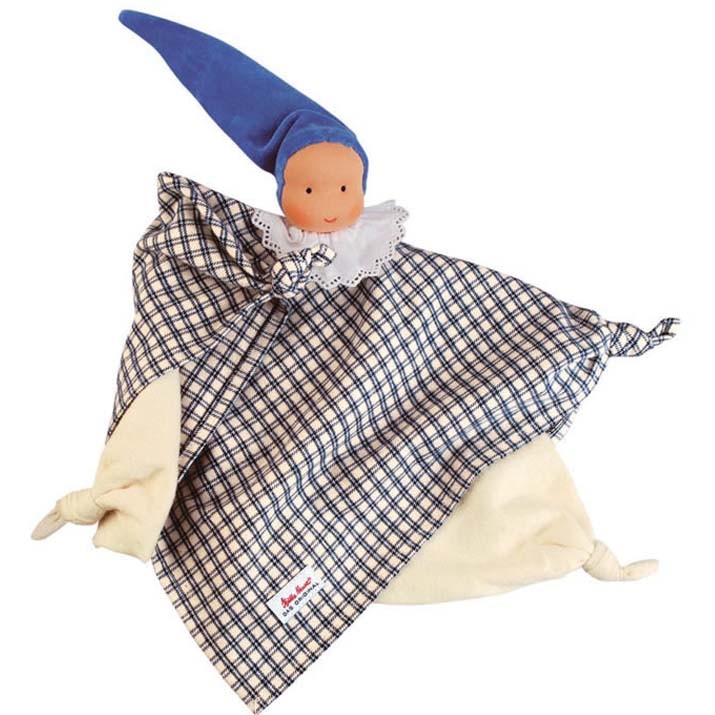
Waldorf Blanket Doll
A toddler at the age of two or three can more easily grasp the concept of “doll,” and at this age I recommend a Waldorf Cuddle Doll. This type of Waldorf doll (which is also known as a “Bunting Doll”) is more huggable, and squeezable. The body is pillow-like and squishy, making it easy for a young child to hold and grasp. The knot at the end of this “baby’s” stocking cape invites gumming and mouthing, and like the Blanket Doll, is safe for doing so.
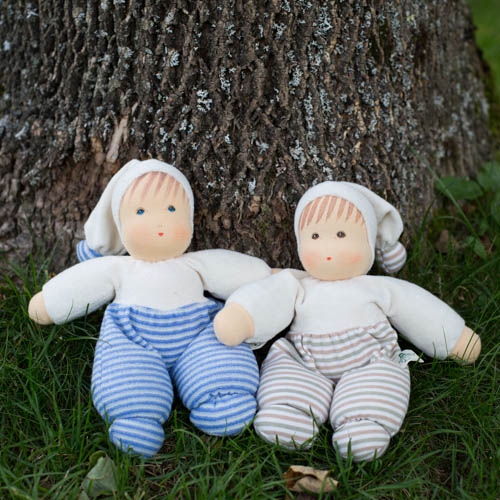
Waldorf Organic Cuddle Dolls
For a child age four or older, I recommend a beautiful and classic Waldorf Dress Up Doll. The “dress up” doll typically has skin made from cotton interlock knit fabric and wool stuffing. The trademark long hair on the girl dolls is usually made of mohair or boucle, and can be braided. It has flexible arms and legs, allowing the doll to be dressed in different changes of clothing, and to assume natural postures.
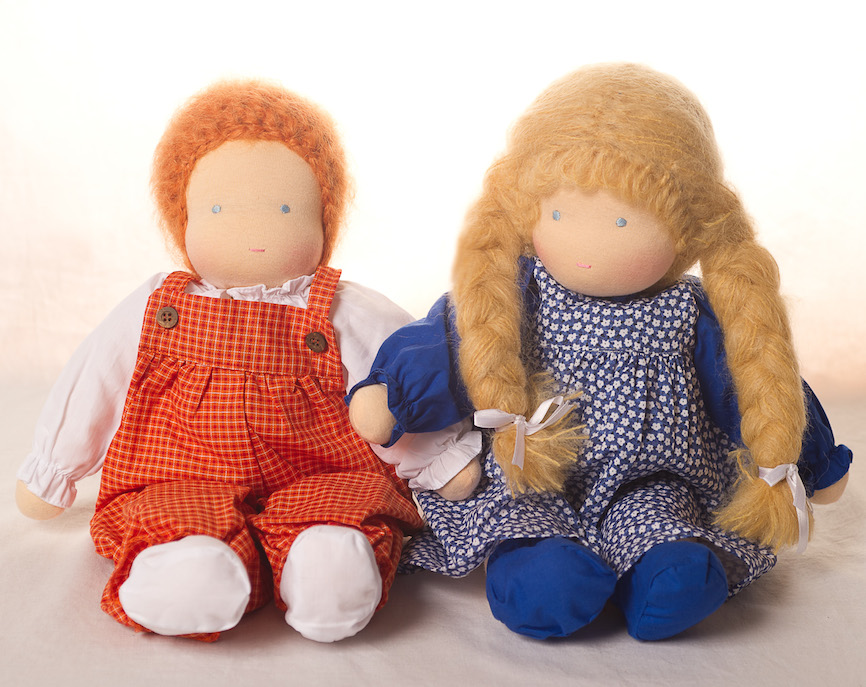
Waldorf Dress Up Dolls – Girl and Boy
It is between the ages of 4 and 6 when children really start to play imaginatively and out of imitation. This is the age when playing “house” usually begins, and children of this age love to dress and change clothes on these dolls, feeding them, having tea parties with them, and so forth. These dolls are ideal for a child who has developed the fine motor skills needed to button and change clothing. In doing so, children further develop these skills of manual dexterity.
Q: My daughter’s doll has some dirt stains on her face and body. Can you tell me how to safely wash a Waldorf doll?
A: Waldorf dolls are generally surface washable only. The best way to wash them is to gently spot clean with a mild soap (I like Dr. Bronner’s liquid castile soap, used very diluted in water) and a soft terrycloth rag. Allow the doll to air dry away from direct sunlight. Never, ever put a Waldorf doll in a washing machine or dryer!
I love hearing your questions! Have a question about Waldorf toys or Waldorf education? A perplexing parenting problem? Wondering about your child’s development? Leave your question here and I’ll do my best to answer in a future post.

